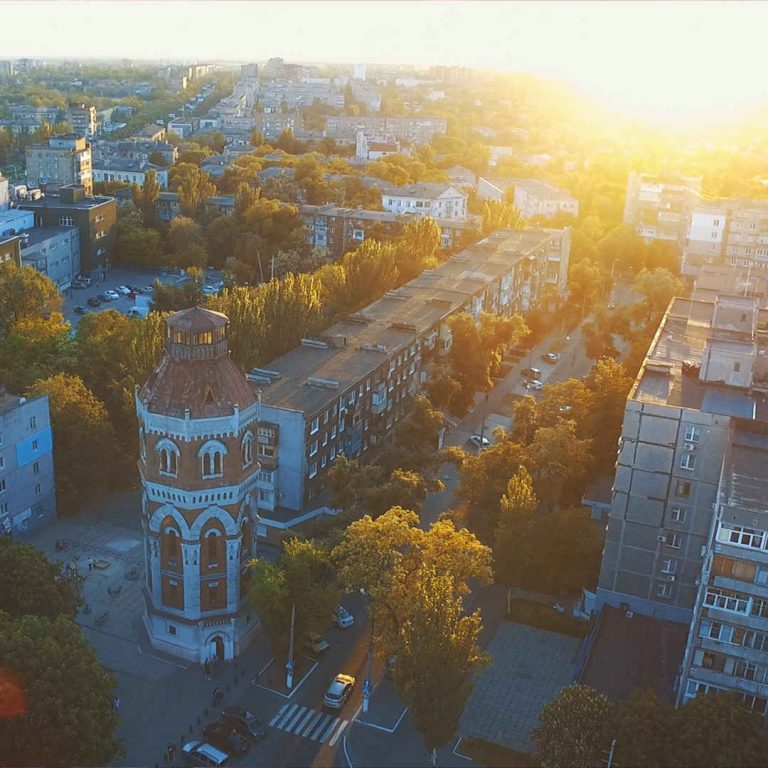In the south-eastern Ukraine, on the coast of Azov sea, there’s a city called Mariupol. The date of its foundation still remains quite a controversial issue – whether to start counting its history from the construction of the Cossack’s watchtower of from the times of the Greek migration from Crimea.
Mariupol — the city of factories and sea. That’s right: first come the factories where about 100.000 citizens of this half-million city are working. In any case, the life of almost every citizen here is somehow connected to the factories.
The war brought new senses and a new breath to the city. Many people think that the war gave Mariupol a chance. Having moved to the new place, people have started an active social life by opening various free spaces, anti-cafes, and quest rooms. New people also inspired changes among city residents.

“JOY”
“Joy” is one of the first anti-cafes in Mariupol. His founder, Mykola Petaev, tells us how this space was created:
— It all started when I opened a quest room. Maksym Karandine and Maria Karandine also had their quest rooms. We’d decided to merge efforts and open an anti-cafe together. Back then, there was no such place in Mariupol. It was the beginning of February when we decided to move in this direction. We were on a low budget, which meant almost no budget. We received a lot of help from our friends: some of them helped physically, some of them with the materials. We decided to craft our furniture from the trays – our common friend has helped us and brought a lot of them.
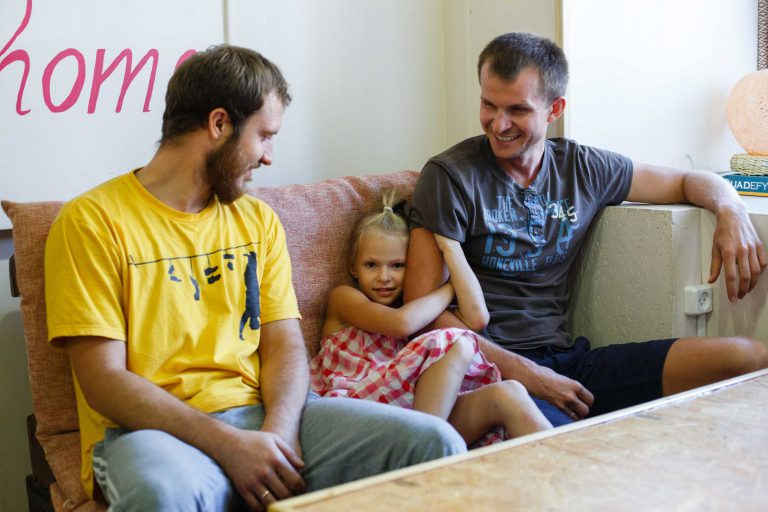
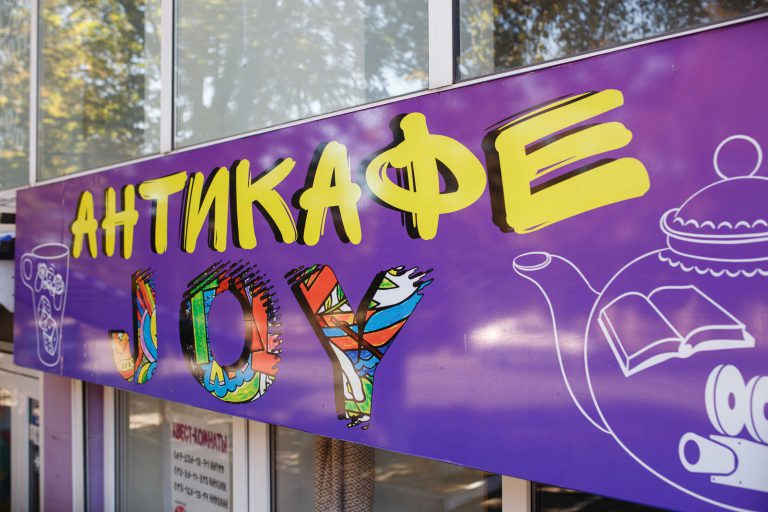
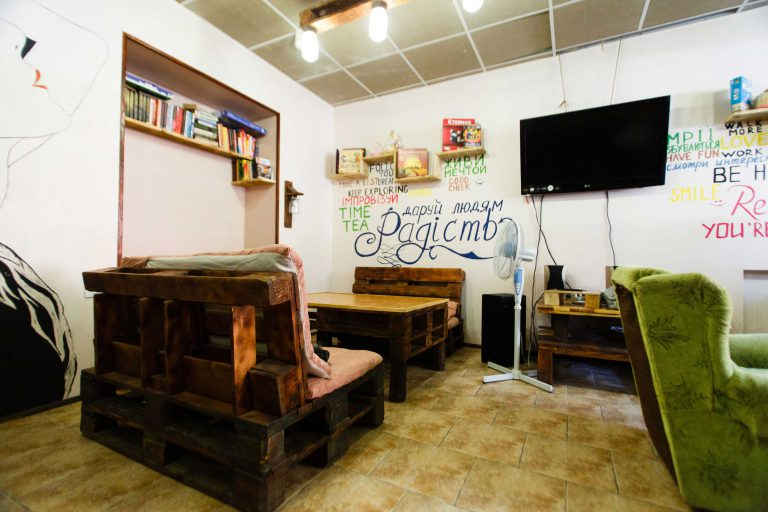
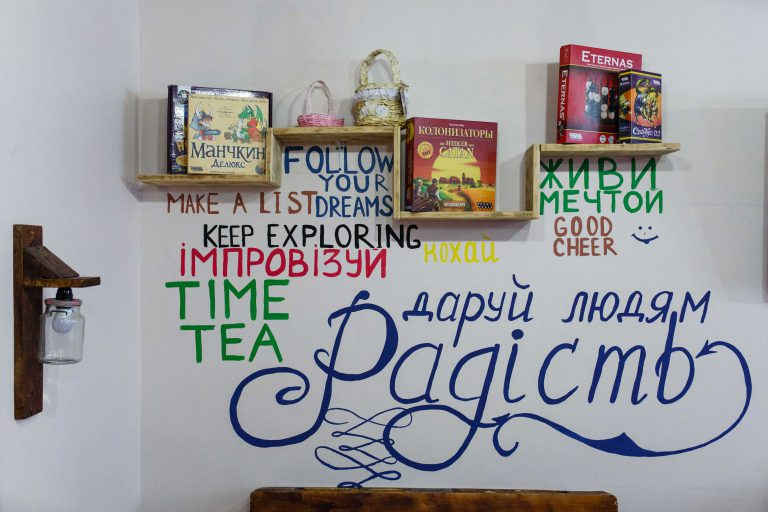
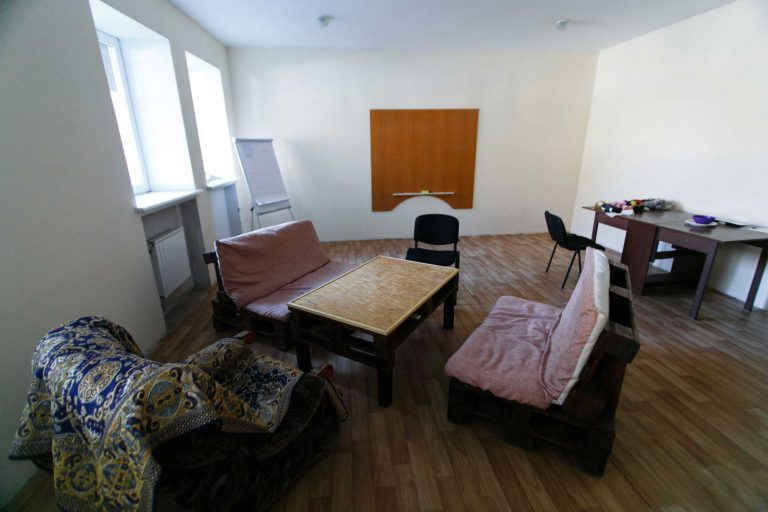
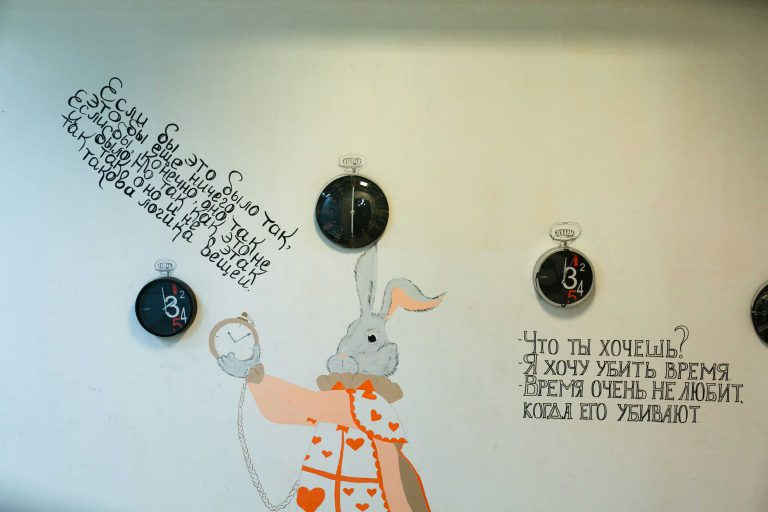
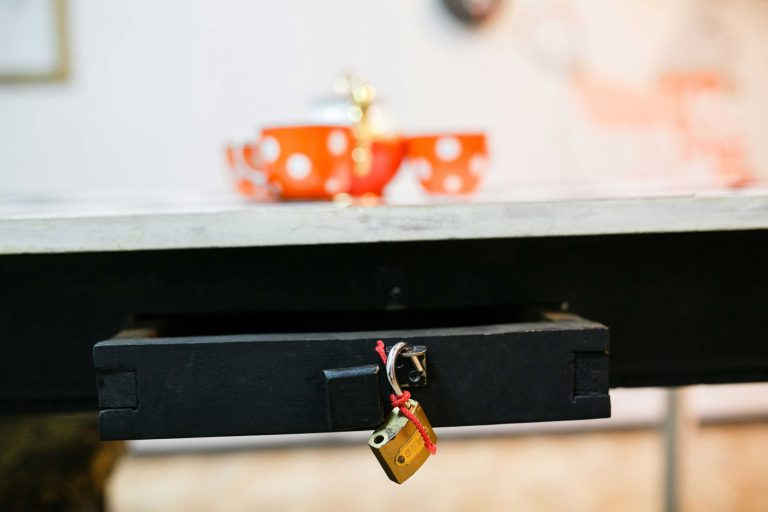
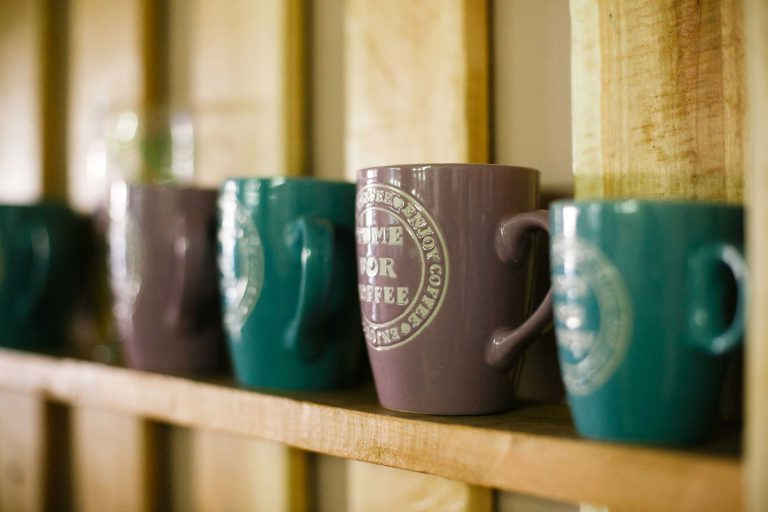
slideshow
Sakhanka is the village where Mykola lived before. It’s located on the disengagement line and is all the time under the fire. Together with his family, Mykola moved to the closest big city, which is Mariupol. And started building his life from the scratch. Along with his life, he started changing the city life – just as dozens of other activists did.
Together with other like-minded people, Mykola is planning to develop his anti-cafe and open one more quest room.

The city of possibilities
According to Mykola, his main goal is to change the life of city residents in a qualitative way:
— It’s essential to enjoy what you’re doing – organizing events, having fun, relaxing. People should truly enjoy it, and at the same time, you should really like it. Good when you can also earn your living by this. Sometimes metallurgists – such city dwellers as we – come to us, and we show them how they can enjoy their time and have a fun by playing a table game. You can have such a great time that the impression lasts for more than one day.
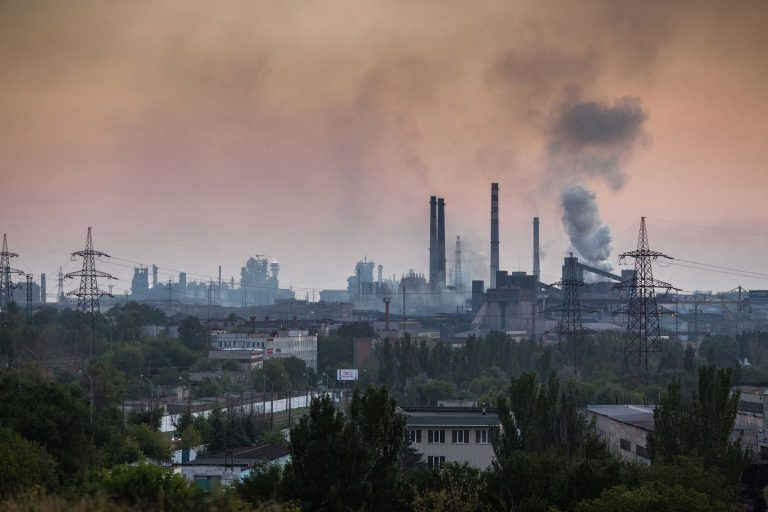
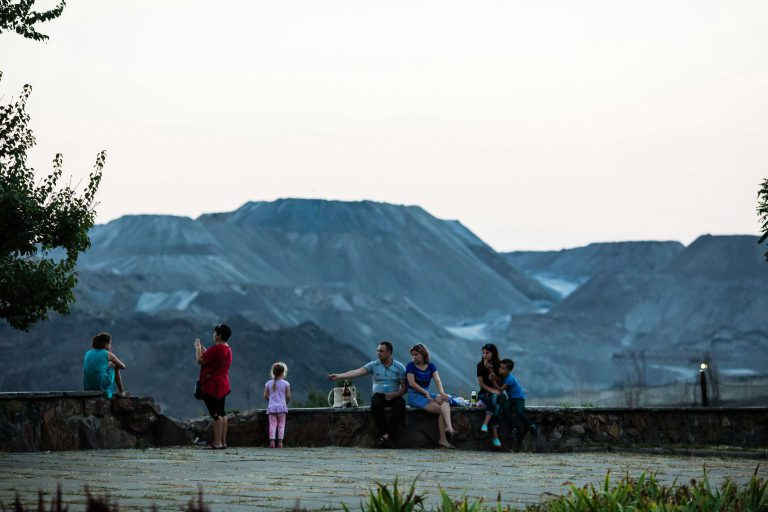
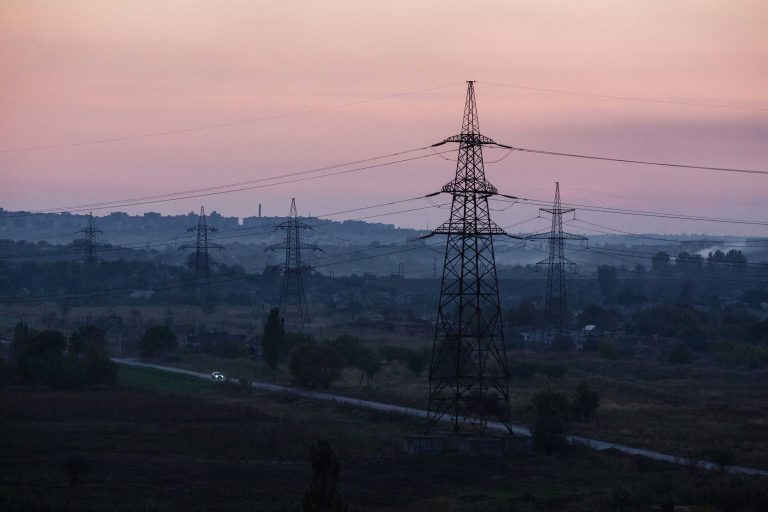
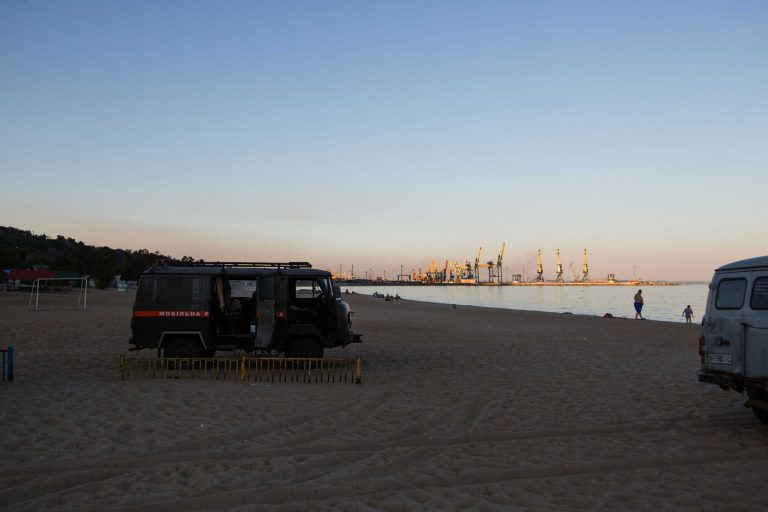
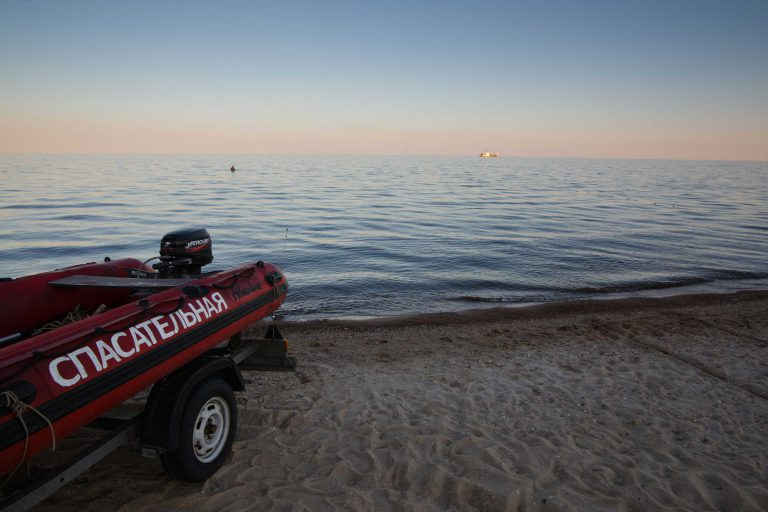
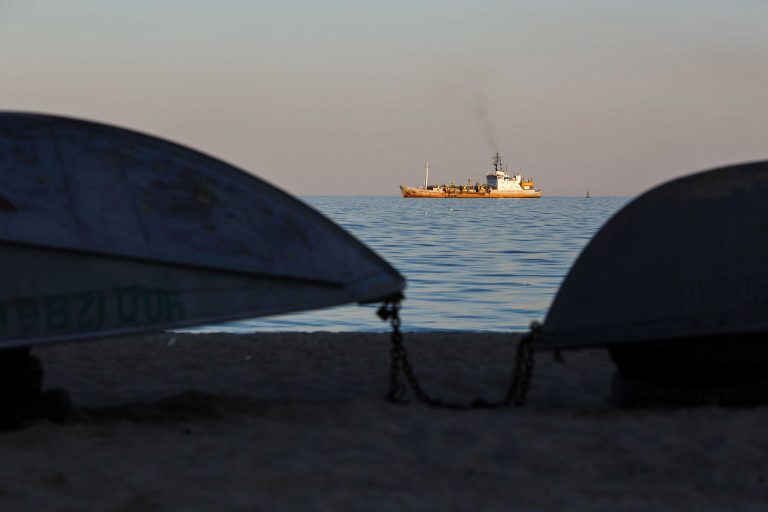
slideshow
Both citizens and those who have moved to Mariupol call it the city of possibilities.
— Now the city has got an advantage. It’s drawing a lot of attention. It used to be quite a depressive place just one year ago because often shelling made people stressed. It’s the time to bring something new, especially because now we are getting investments for developing our city.
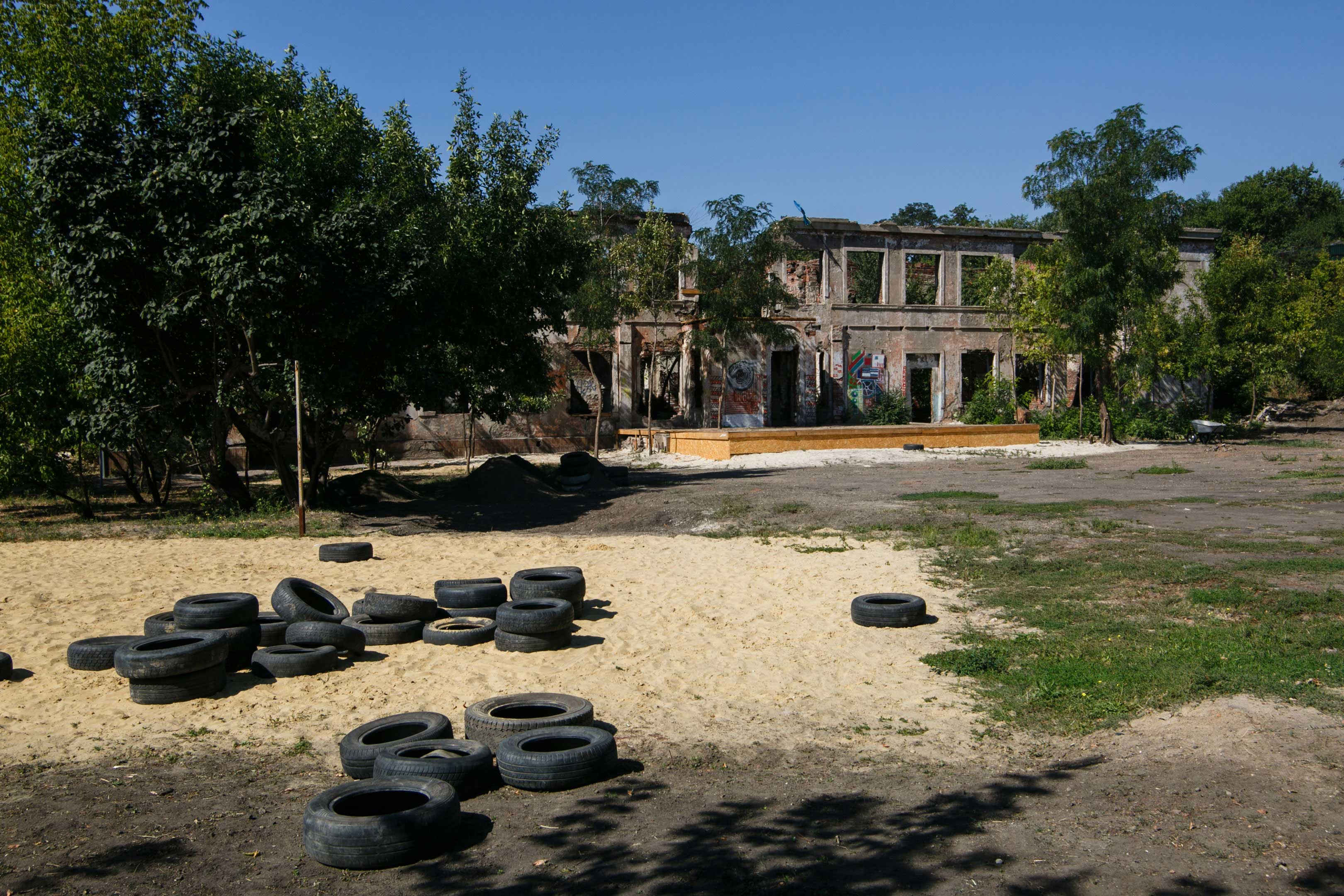
“Mariupol players”
In Slobidka, the oldest area of Mariupol, which is now a marginalized urban area, there has been no entertainment for decades. There are certain problems with the illumination and improvement of the populated area. Slobidka is considered as one of the most criminal areas of the city.
Slobidka became a place to realize the project called “Mariupol players”. It implied turning the ruins of the old children garden into a free space, which now serves as the place for various concerts and exhibitions. Together with Vladislav Zaytsev, the local activist, Mykola Petaev took part in this project and tells us about this experience:
— It’s one of the historic areas of Mariupol. It’s quite a peculiar region as it’s populated by a certain society. We created a scene, played around with the ruins of the garden, made a square, held concerts there for local people. It was very interesting.
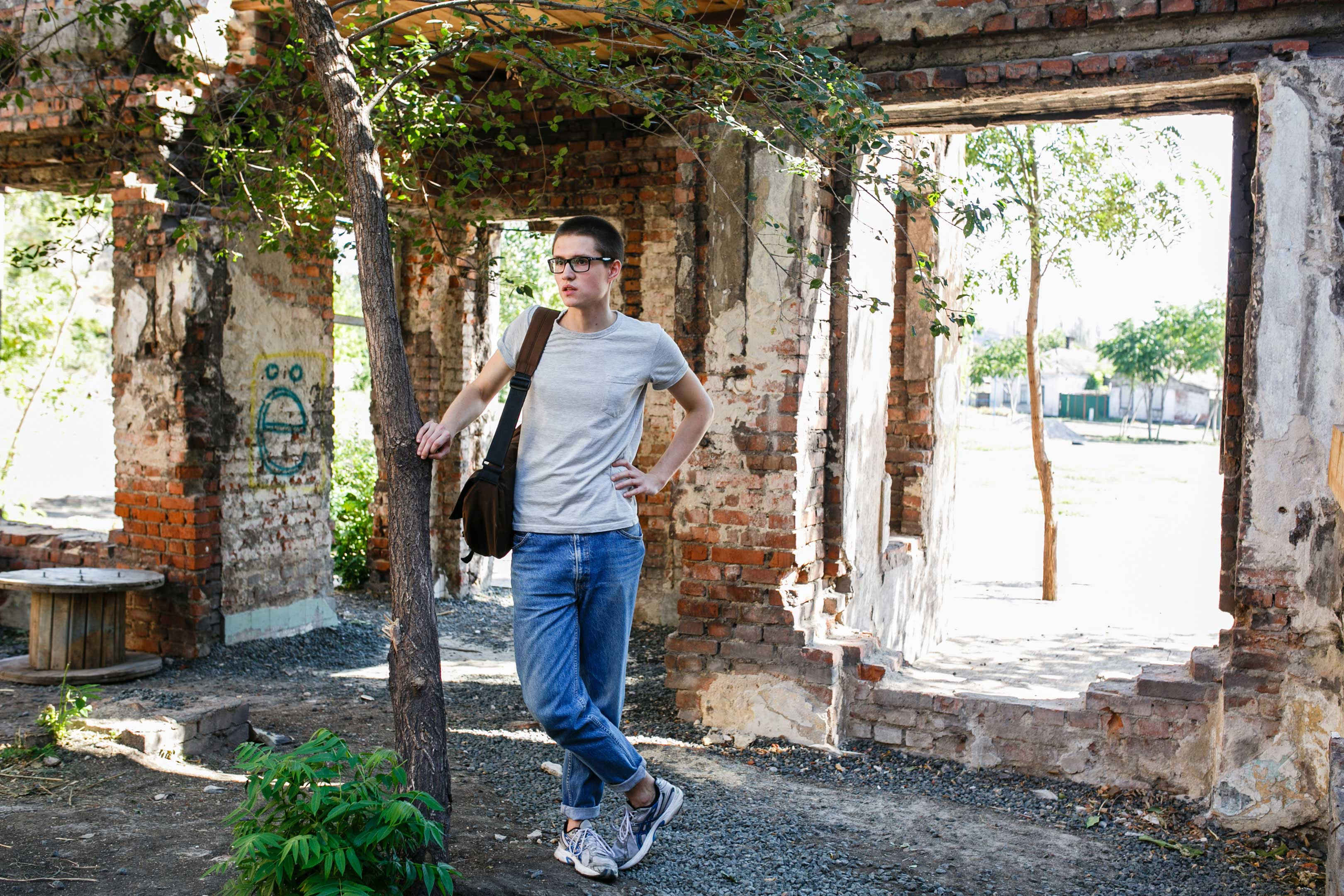
Владислав Зайцев
Vladislav told that the initiators of this project were people from Kiev – the project called “Urban curators”. There were different options for the location. However, they had to refuse most of them as we couldn’t contact owners of the buildings or territories:
— So we decided to make an experiment. We started a project, and after a while, the owner came up and said: “It’s cool what you’re doing guys. Carry on!” And we did it because every time we were trying to find other locations, we failed.
The local government forgot about Slobidka long time ago, and all the initiatives used to avoid this place. That’s why when we’d started this project, locals reacted to it with a certain concern.
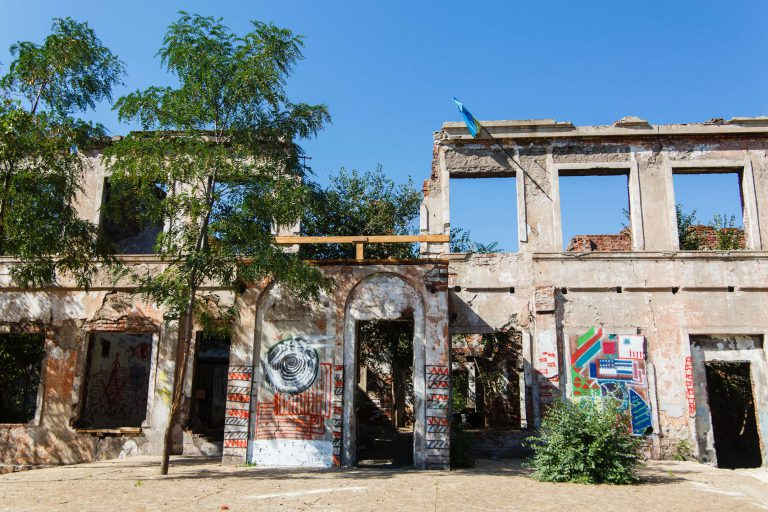
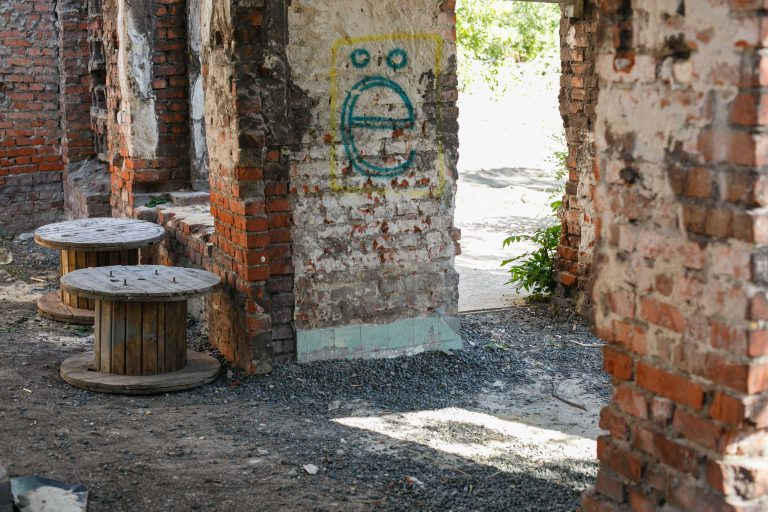
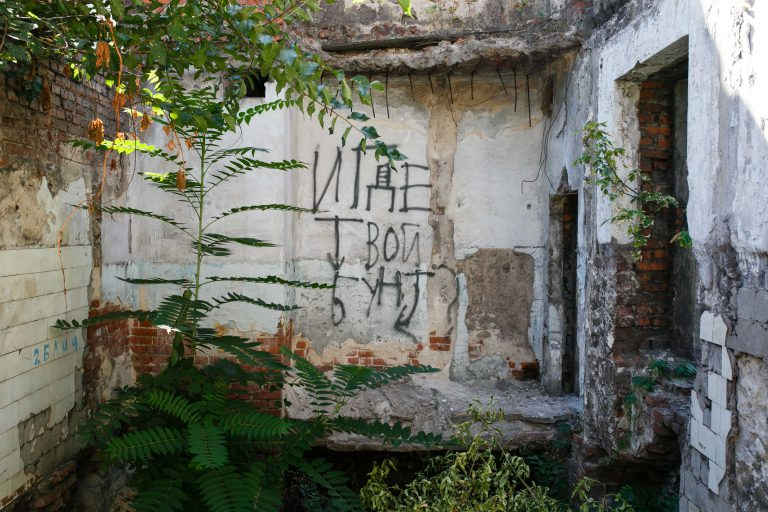
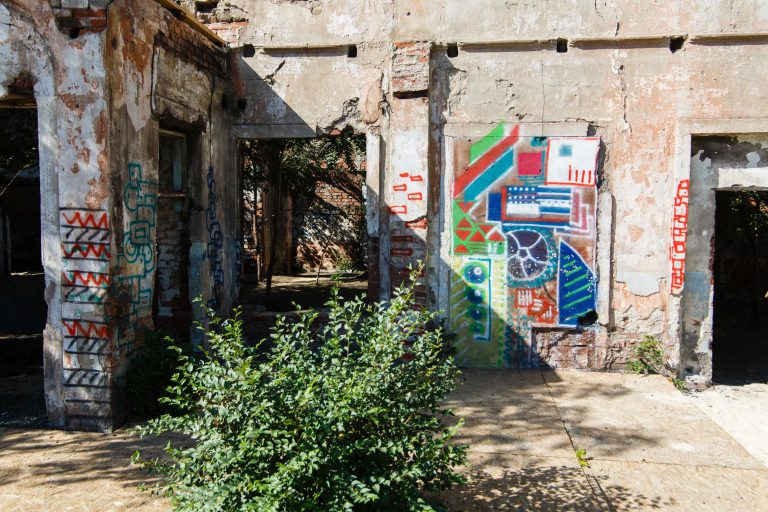
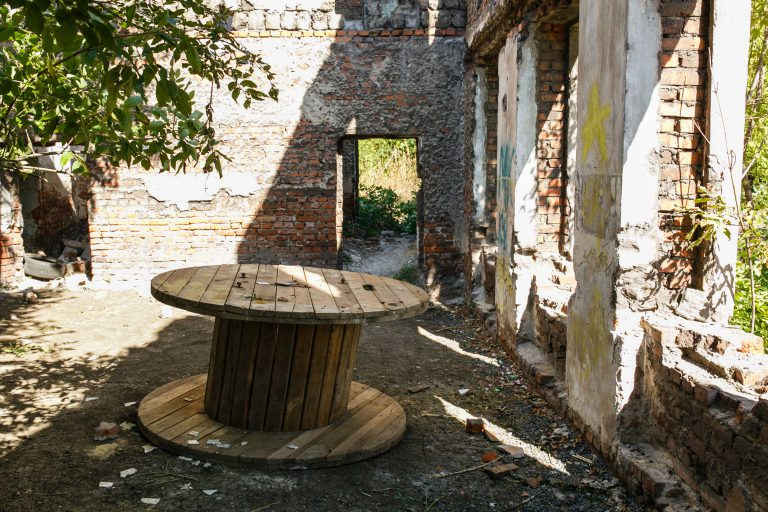
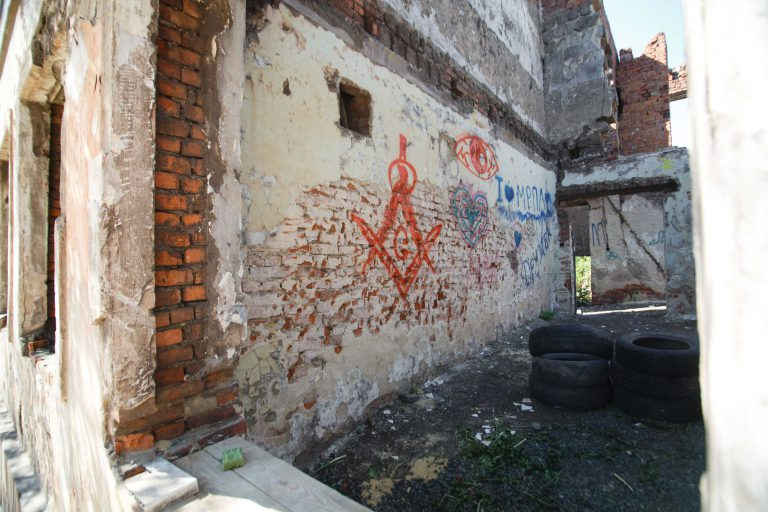
slideshow
There were only walls left after the former children garden. There were trees and weeds inside and garbage heaps outside. The place was gradually turning into the dump. The participators of the project cleared up the territory – they took away the garbage and got rid of the weeds. They started by making up two “rooms” – we laid out the wood particle base and put photos onto the walls. They made up a scene at the entrance of the building:
— The scene became the most difficult and important moment. By the way, the most part of materials came from the factory. And indeed, it’s a great pleasure for Mariupol when factories interact with the socially active citizens. Perhaps, one of the reasons was that there were people who came from Kiev. You know, such a post-soviet union syndrome – not to fail in front of people from the capital.
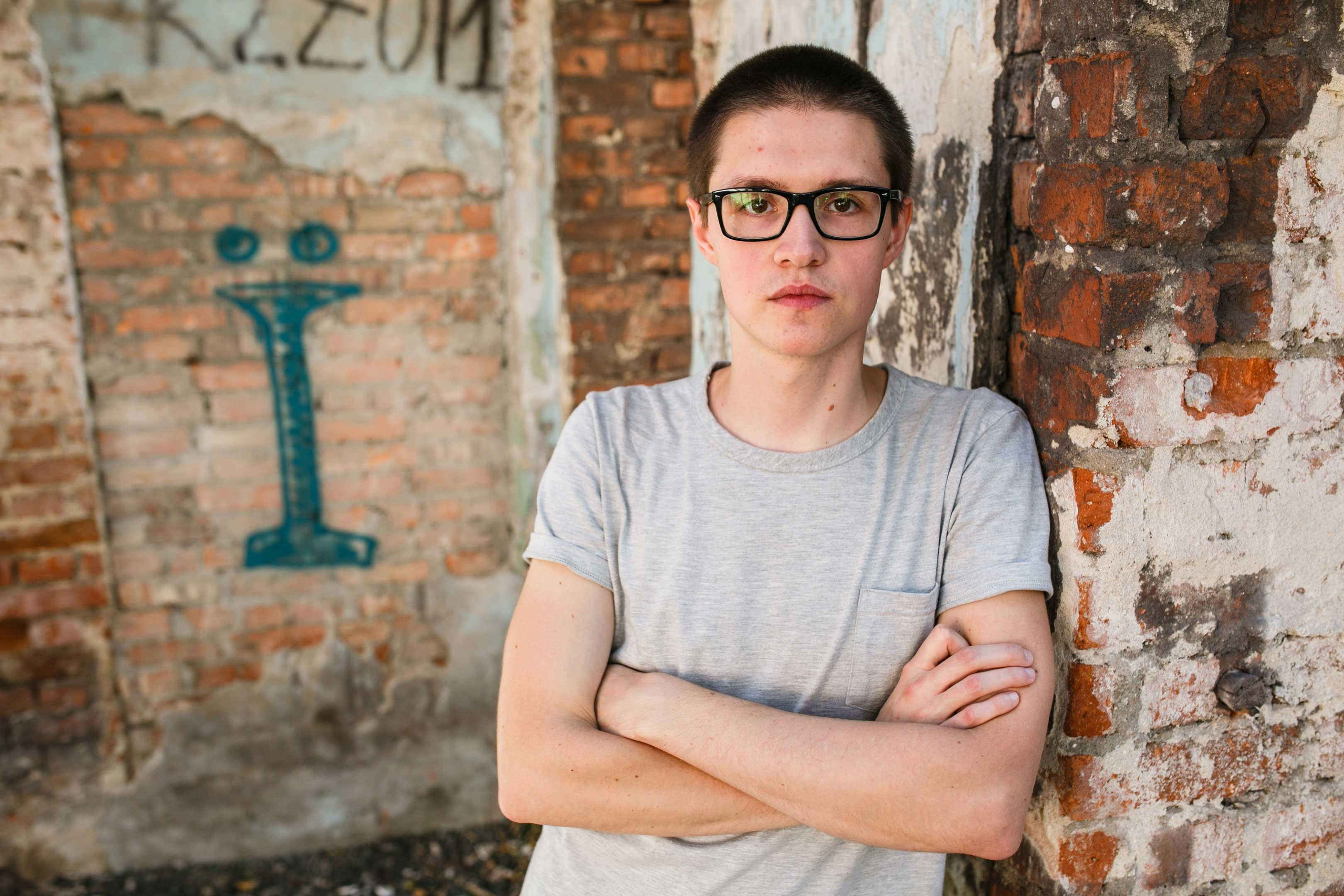
According to Vladislav, the opening was successful:
— It was a massive event at the opening. We had over 200 visitors. Then, we hosted musical Friday. At least, we plan to have regular musical Fridays, but, of course, it’s better to make a mini-festival. We have found a lot of cool musicians in Mariupol. They were playing jazz right from the scene. It was very cool.
“Mariupol players” project has finished, but activists still want to develop the infrastructure of the city.
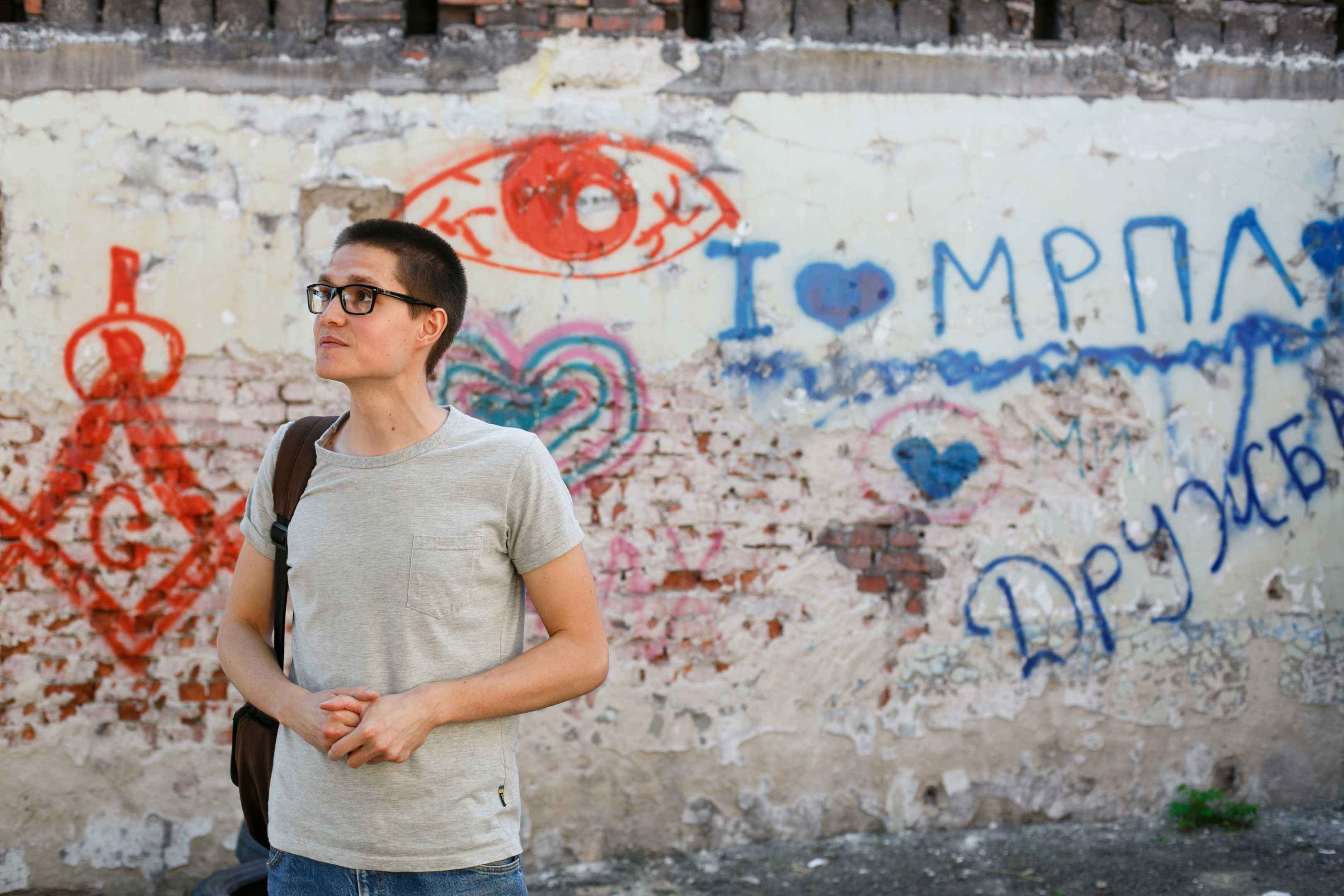
“VEZHA”
Now Vladislav Zaytsev is co-coordinating the project called “VEZHA — creative space”. This free space is located in one of the key places of Mariupol – the water tower which is the symbol of the city. It was built in 1910 according to the design of Victor Nilsen, the architect that also designed the entire system of the water supply of Mariupol.
For decades, it has been the first time when the tower became an object of the touristic interest. Different lectures are held here. Moreover, there are plans to open an IT-cluster and an information center for tourists here. There’s also an observation area from where you can have a view of all the parts of Mariupol, and there are plans to repair and open it to the visitors.
Vladislav tells that here it’s also possible to see Mariupol streets through the glasses of virtual reality the way they were centuries ago:
— We already have a piece of the central street from the drama theater to the Mariupol driver school that looks exactly as it was 120 years ago.
Apart from the virtual reality project, there’s a mobile application for tourists and city residents. There’s a list of cafes, parks, interesting history and architecture places. Walking tours are planned.
Vladislav says that nowadays Mariupol is way more interesting and active place than it used to be five years ago. Though back in 2014, the city lived in anxiety – as the result of the closeness to the disengagement line.
— It’s an extremely scary state when you go to sleep and you don’t know what is going to happen tomorrow or even in one hour. Not in a year and not in a week, but in an hour. The city was living in such a state during 7-8 months, and it was really hard. The city stood frozen. People weren’t doing anything, just sitting and thinking whether they would have to run away or not.
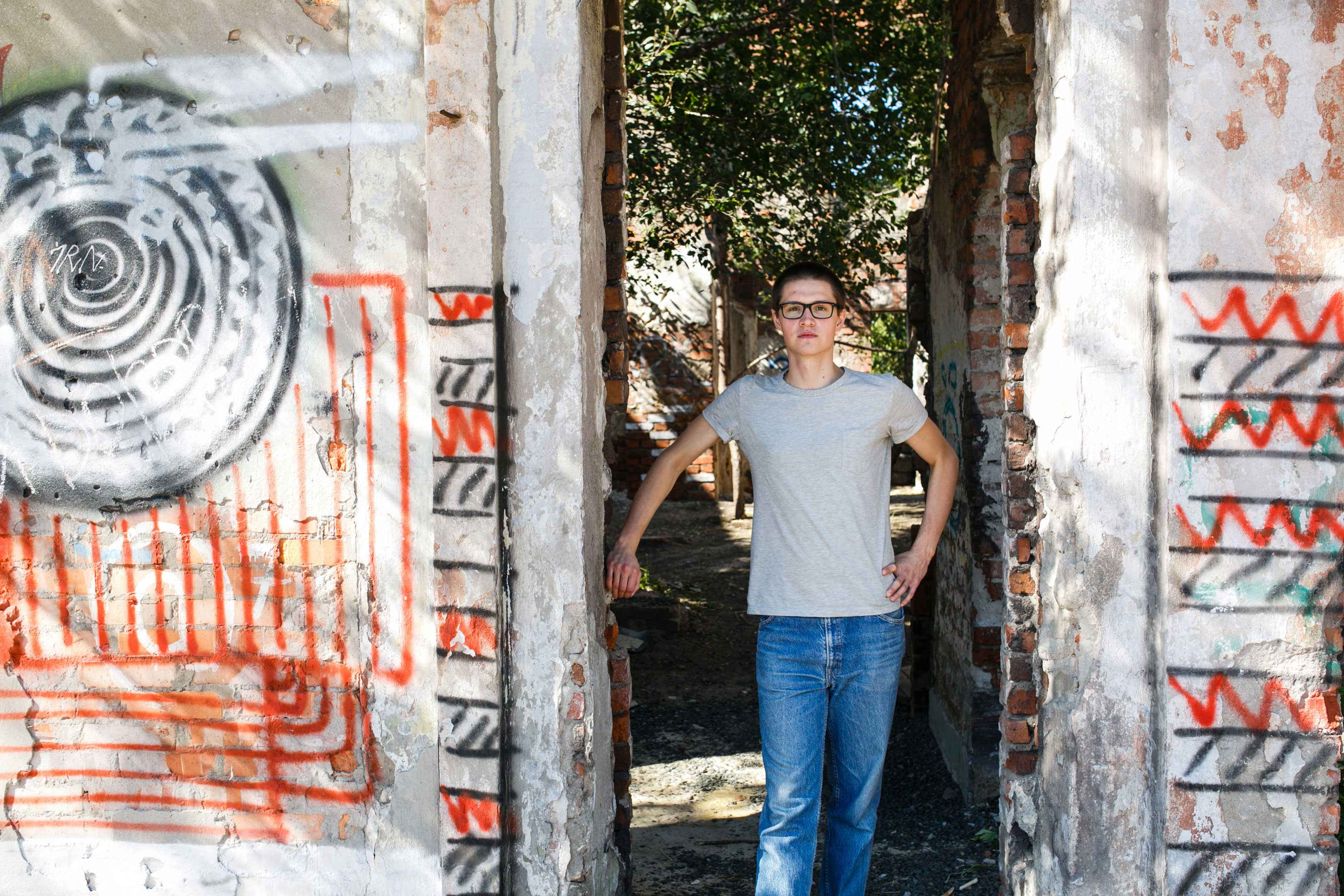
Then, the situation stabilized a bit, and new initiatives began to emerge. Vlad says that one of the catalysts of changes were displaced people:
— Displaced people, in particular, those who came from Donetsk, became the most important cause. Donetsk used to be more developed than Mariupol, and now those people that had an experience apply it to create something interesting in Mariupol. Perhaps, they are doing what city residents didn’t dare as they thought the city wasn’t ready for something. And now, the fresh vision of new people, their confidence, understanding that they have to build it from scratch made an effect.
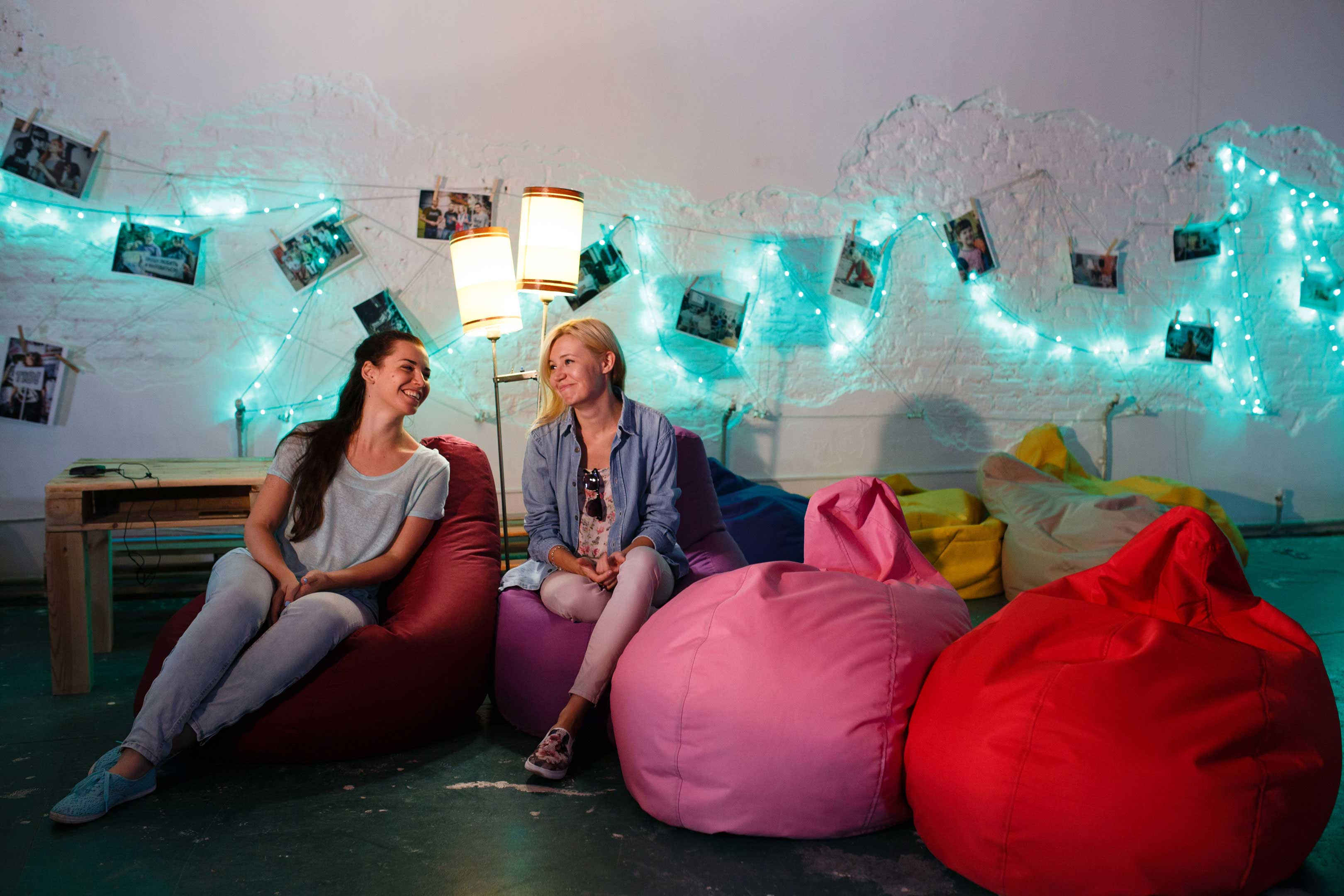
“T’U”
Diana Berg, the founder of the art-platform “T’U”, is one of such displaced people. She had organized a series of interesting events before the platform was created.
The project manifested itself in a bright way – they organized the first “NOmonstration” (“НЕмонстрація”) with the posters and mottos: “T’u is our everything”, “Scho is our nothing”, “Peace, work, wi-fi”, etc. They organized performances of Zhadan. After a loud opening, they hosted «Dakh Daughters». Also, Larisa Benediktova from TanzLaboratorium showed the performance “Shevchenko. Tiredness”.
All this has changed the cultural context of the city. In the past, there were only Russian and Ukrainian artists of pop-music that on holidays performed at the central scene of the city. Not always the top ones. The cult musicians had been something everyone could only wish for a long time. The concert of “Okean Elzy” became local Glastonbury or Sziget Festival – people came from other cities and occupied territories.
— “T’U” is the first art-space in Mariupol of the new format. His organizers see it as a platform of cultural and social initiatives, concerned not just with art. Diana explains that the informal naming of the space reflects the character of local dialect:
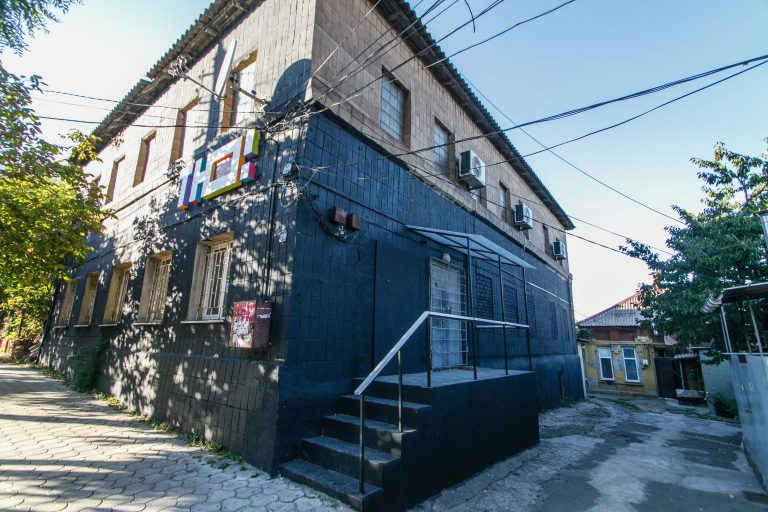
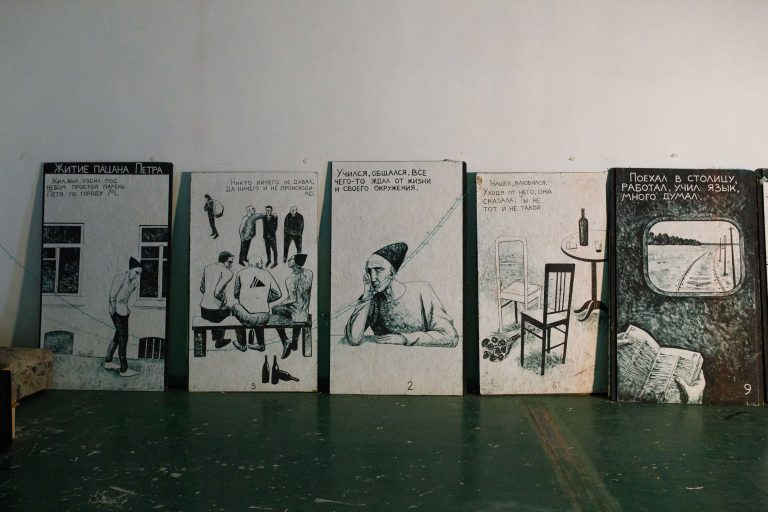
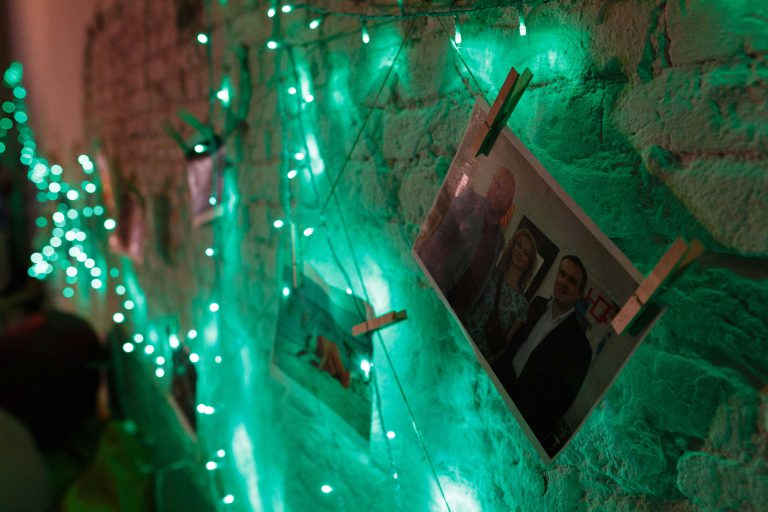
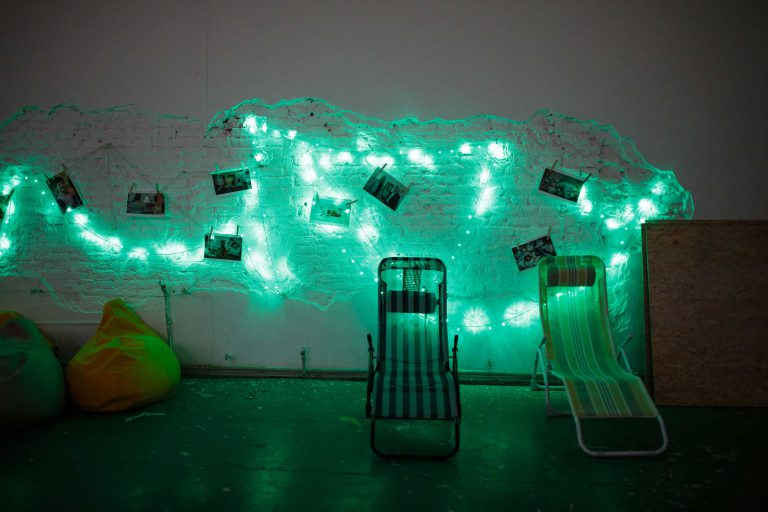
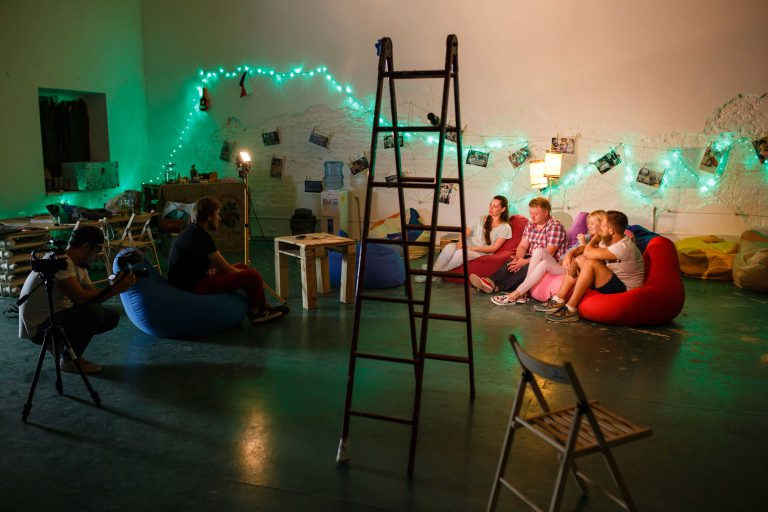
slideshow
The art-platform is located on the oldest street of the city – Mitropolits’ka.
— The history of this building is very interesting. As people say, there was something like Jewish church here. It’s over 100 years old. In soviet union, they turned it into a sports hall. There were also some clubs there, and then it became a gym. After all that we made an art cluster here, which has already hosted so many talented people.
By means of their events, “T’U” team isn’t just inviting to spend time in a fun way:
— These events aren’t only popular. They carry sort of a challenge: “Let’s think about it”, “Are we ready to talk about it?”, “Would you ask a stranger about it?”, “Why isn’t it a subject for the discussion in your kitchen?”

“T’U” team has made a social experiment called “Barrier” that was dedicated to drawing attention to the problem of disabled people:
— We blocked one of the pedestrian subways with the wheelchairs and left only the path for women with children in prams and disabled people in wheelchairs. It’s extremely difficult to descend or ascend even with an empty pram. A person in a wheelchair wouldn’t be able to use this path by him/herself. There was sort of philosophy in that. People were easily using this subway where you could hardly walk. There were seats in between wheelchairs. You could sit and talk with the person in a wheelchair, ask him/her any simple question like what you like, what you like to eat, which restaurants you visit. They also go to restaurants, they are interested in the same things that rest of people.
The experiment didn’t end this way. The result came in the form of the documentary film that was made during the experiment.

The organizers celebrate their small victories – the audience is growing. We are visited by people who wouldn’t think about opening the doors of an art-space before:
— There are people who work in the factories. They come to us and ask us not to take photos of them – they are afraid that others may find them on social networks and figure out that they attend such events. At work, people may not understand them. They are still rare, but they are coming. And, most importantly, when they come once, next time they will come with a buddy, a friend.
We are planning to expand and fill empty spaces of the building:
— Also, we have an underground space where we can make our workshops. We would like to keep up not only with the help of grants. We would like to monetize our activities. Perhaps, there will be a coworking as one of the parts of our space. We are still thinking about it.

The “T’U” team isn’t just about colleagues – they say they have become friends:
— An office team differs a lot from the team we have here. After an event, we don’t shake hands and go away to have some rest, but we go together to drink some tea and maybe something stronger. We don’t say: “Bye-bye, see you tomorrow”. It’s not how we treat each other here, we’re friends.

“Halabuda”
The free space “Halabuda” was opened in 2016. There are meetups, masterclasses, educational, and entertainment events. Also, there are a help center for soldiers, displaced people and those who appeared in a difficult life situation; a coworking and a business incubator for displaced people. “Halabuda” started with the volunteer center:
— First, it was a social organization called “Eastern gates”. We were involved in volunteer activities. However, as the conflict was intensifying, every month was coming with the new difficulties. First of all, it became more difficult to keep up with the accommodation. And that’s why, apart from the volunteer help, we decided to take up a social business and try to attract some finances to carry on our volunteer activity. First, we planned in our group to open something like an anti-cafe, which may host different events, masterclasses, educational programs.
— “Halabuda” team call themselves as the free space for development. Their motto is “Changes start here”
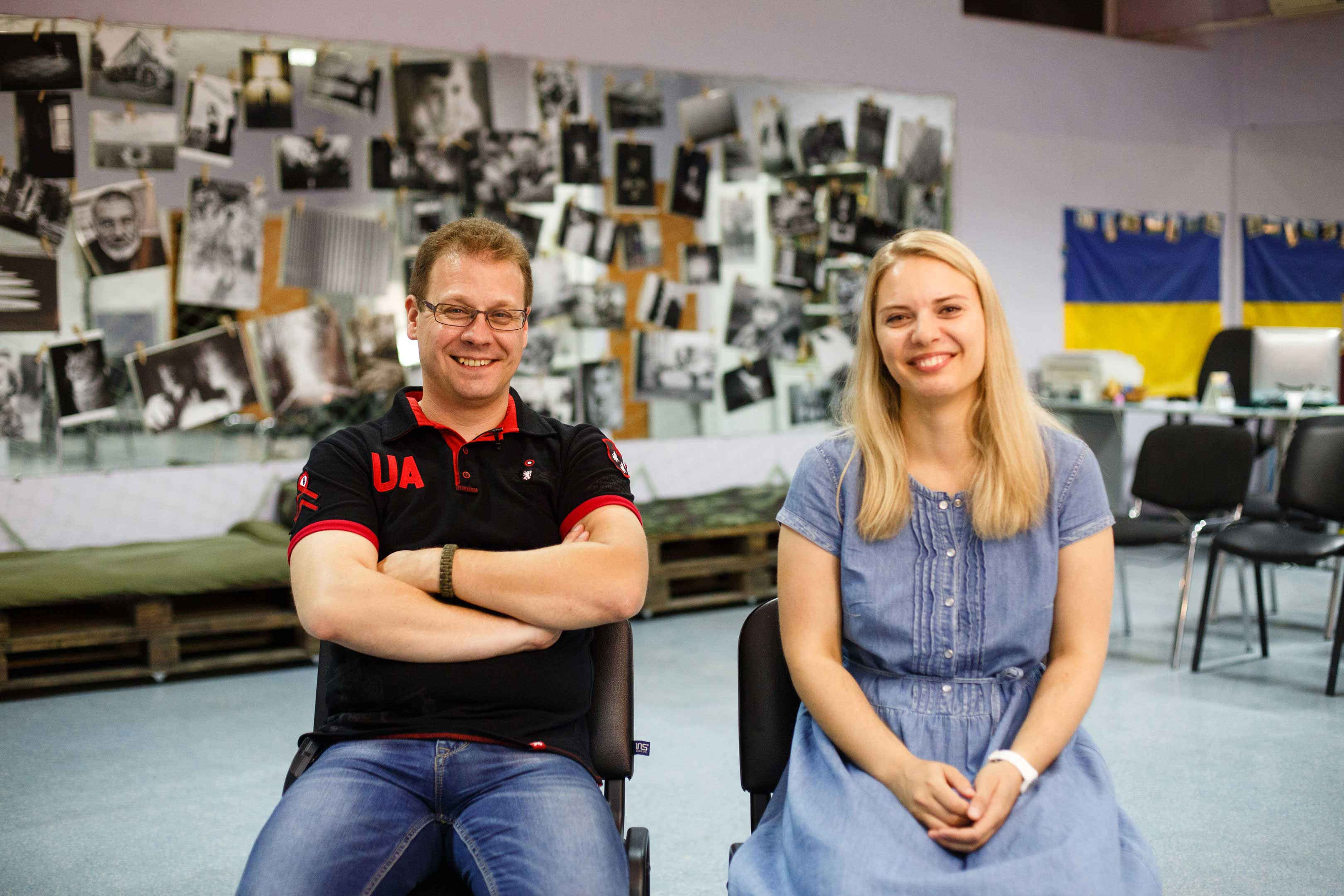
— Our events aren’t made specifically for soldiers, displaced people, or children. Even when we make an event for children, we don’t usually mention the age of attendees as we know that such events are attended by adults. Quite often, mothers of two, three, four and more children come to us. They are already thinking about the future for their children, how they are going to live here, in Mariupol, how they are going to develop here. And we have to do the maximum for those people who want to do something for their children. Now they have the place where they can come and work. It’s also important.

2014 became a turning point for most of the “Halabuda” team. Before the war, Dmytro Chichera, the founder of the art space, used to work as the main engineer at the industrial company, was photographing, managed the school of photography:
— When the war came, as a liable for military duty person that had served in the army and knew the conditions soldiers of 72 brigade have, I realized that apart from reaching my goals it’s important to help as much as possible.
However, it wasn’t possible to combine the work and volunteering for a long time. Dmytro filed an application for dismissal and got few things on his agenda – the school of photography and volunteering:
— It became absolutely unimportant for me whether the production is going well, whether it was unloaded or not, whether there were any supplies, whether there were any difficulties at the border because I had got new values. I saw it clearly and understood what was going on in the country. That’s why I became one of the organizers of volunteer center that first was actively helping soldiers and later started dealing with displaced people. We were helping people move, settle, and with food provision. Later, we got involved in the work with children – the boarding school where children from Maryanka orphanage were placed.
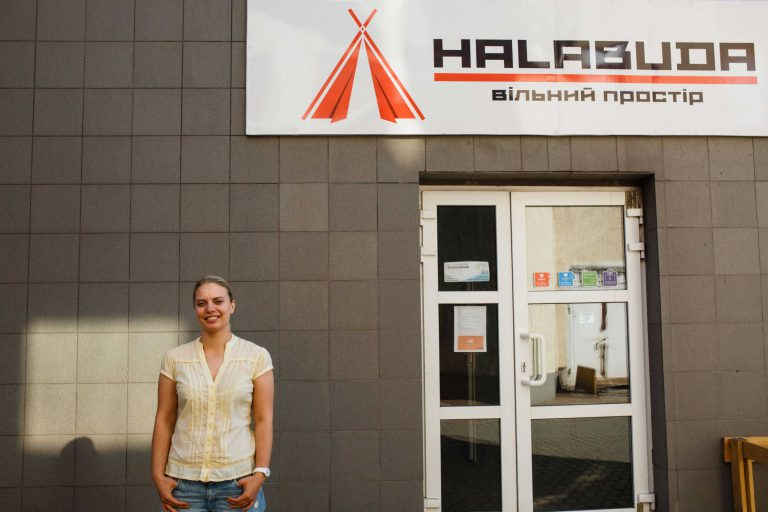
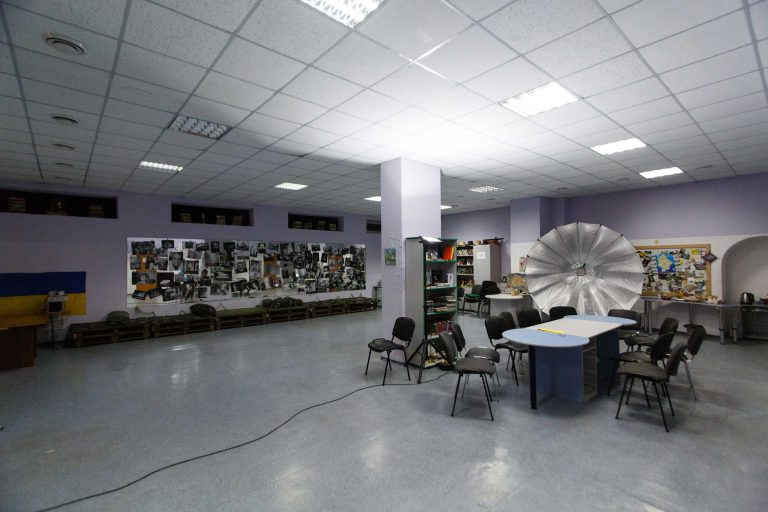
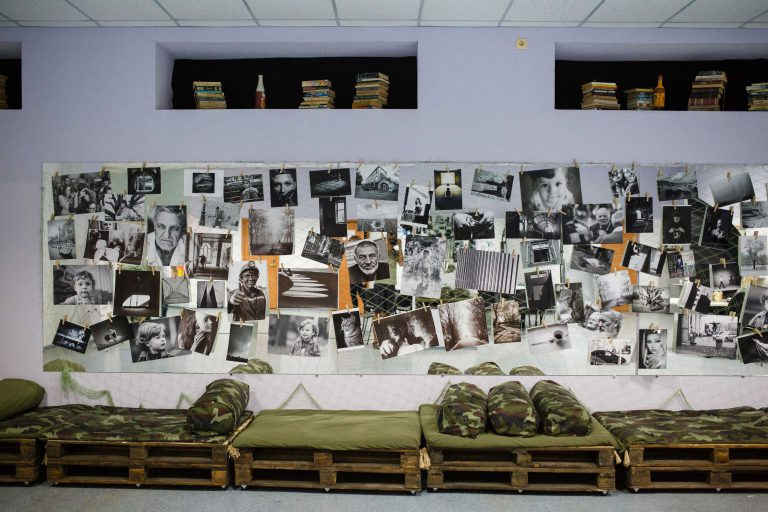
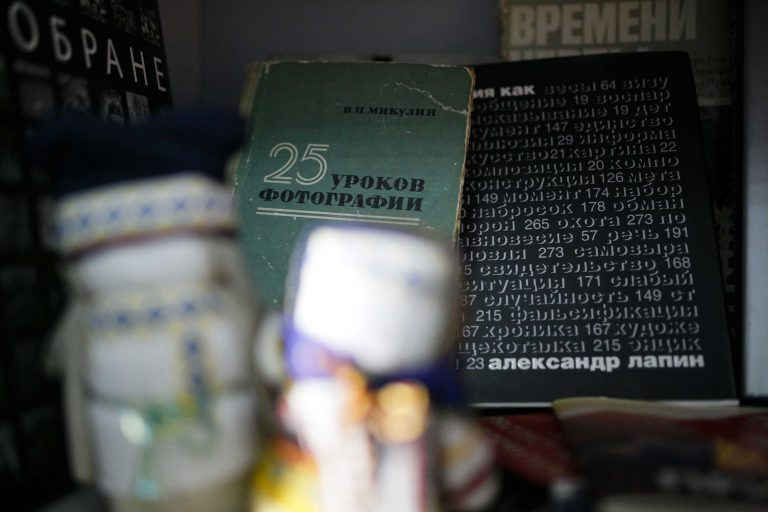
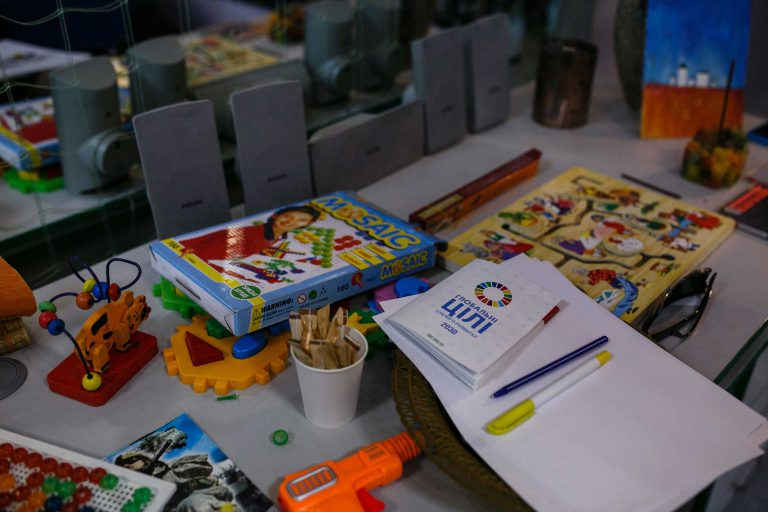
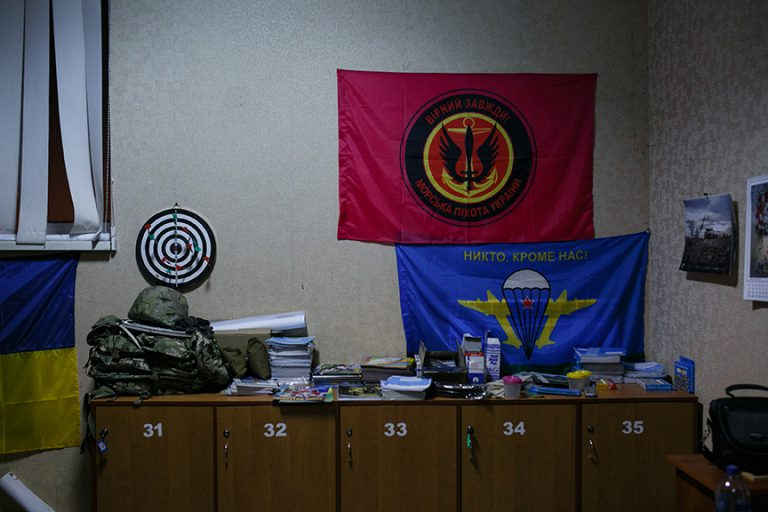
slideshow
Galyna Balabanova got involved in the volunteering occasionally and never left it since:
— I remember how on my birthday in January the Donetsk route was covered with the snow. And I got a call from the man who said: “I have a few cars on the halfway. They are freezing. I am in Kiev and I don’t know what to do. You are in Mariupol, you are closer.” And I was coordinating this work till 5 am. We were trying to reach out to “Zelenbud” (“Зеленбуд”), to get somebody with “Ural” (“Урал”), called people from MES. Something like that was happening. Then, things became more difficult on the front line.
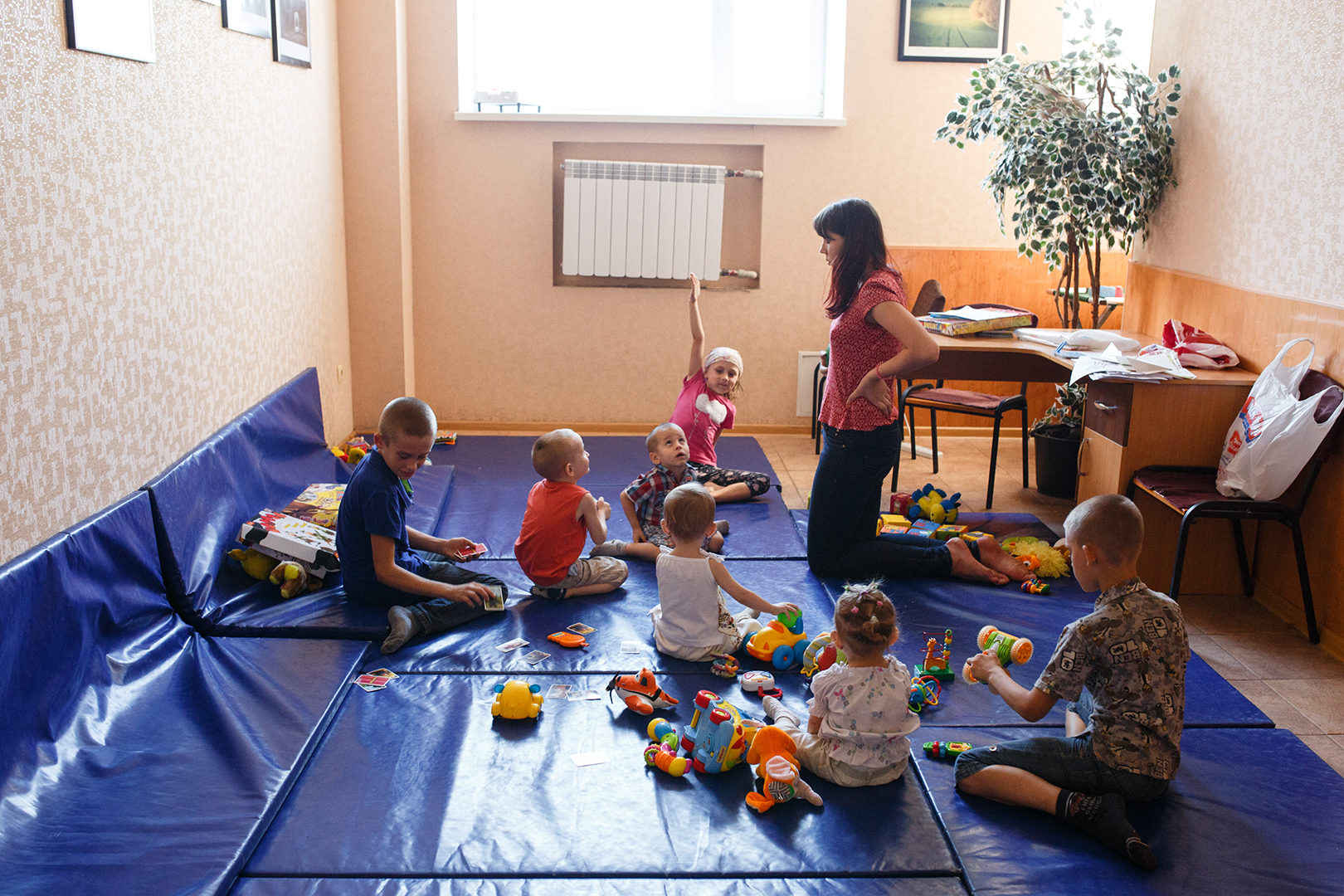
The future without factories
The future is seen here without factories. Dmytro is convinced that factories are going to disappear in a while:
— Earlier or later, at least we will come to closing the steel plant. And I’m more than sure that the city won’t die after this but in contrary will get a new economical rise because the plant income is insufficient and the city won’t feel any difference. We just need to prepare people. They should understand that apart from the work at the steel plant they can acquire knowledge and work for themselves.
“Halabuda” shows it by their own example. The founders say that they pay their bills by themselves, which includes renting an apartment of 350 square meters, utilities.
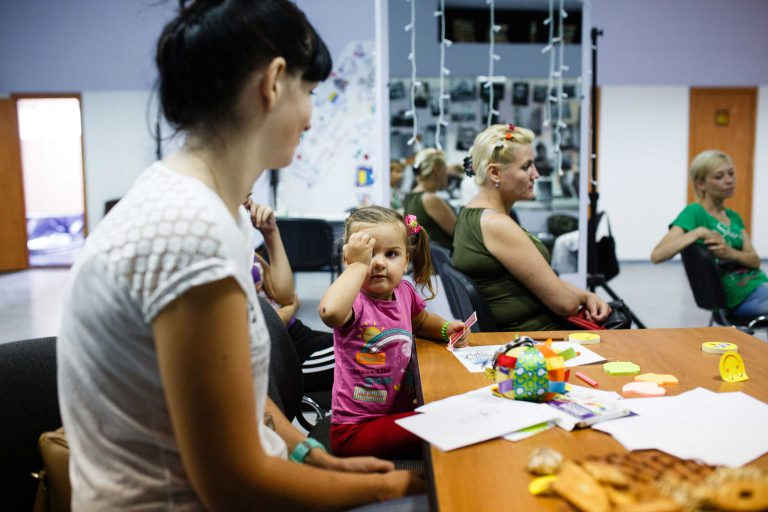
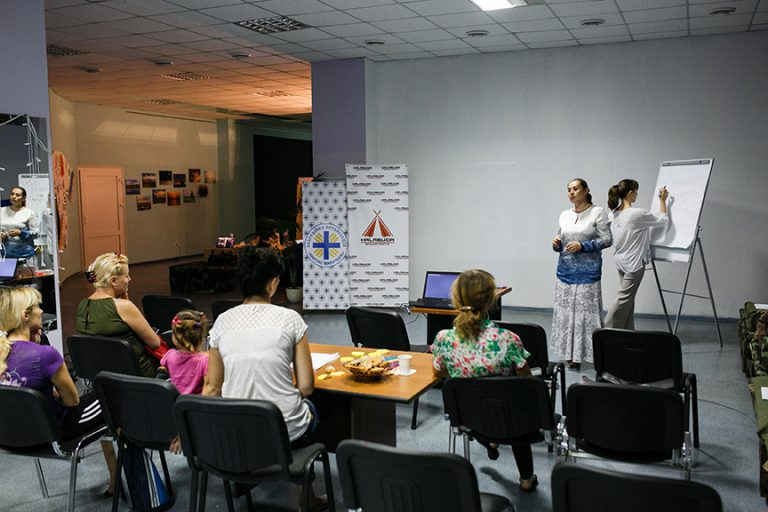
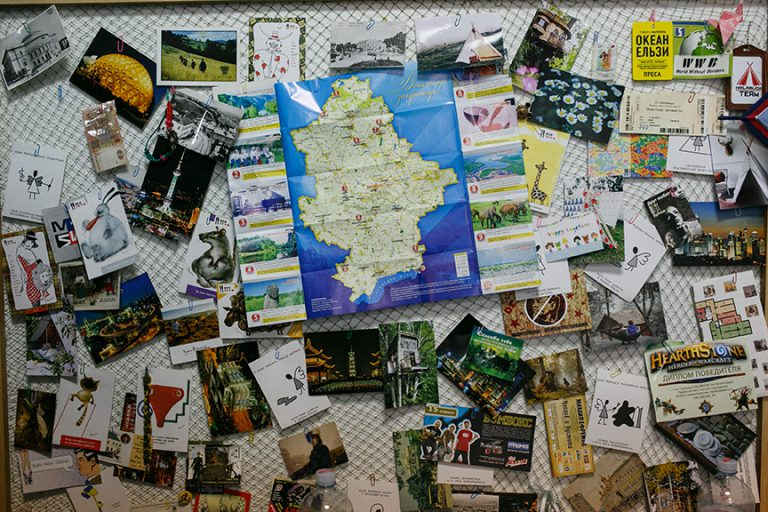
slideshow
— I think that we are already changing factory workers, I mean the hardened ones. They come here with their children and live them here so that they will come back for them in 1,5 hours. Next time they come and stay for 15 minutes observing what their children do here. “Oh, Paschal eggs, interesting!” Next time they do it with their children.
Still, the stories of transformations are rare. Some friends of Dmytro that had used to work at the steel plant went to the war and don’t intend to come back:
— They went to serve and already signed the second contract. It means they didn’t serve one-two years but realized that what they are doing now is more important for their country and started talking about it. There was no such thing before. The values were different.
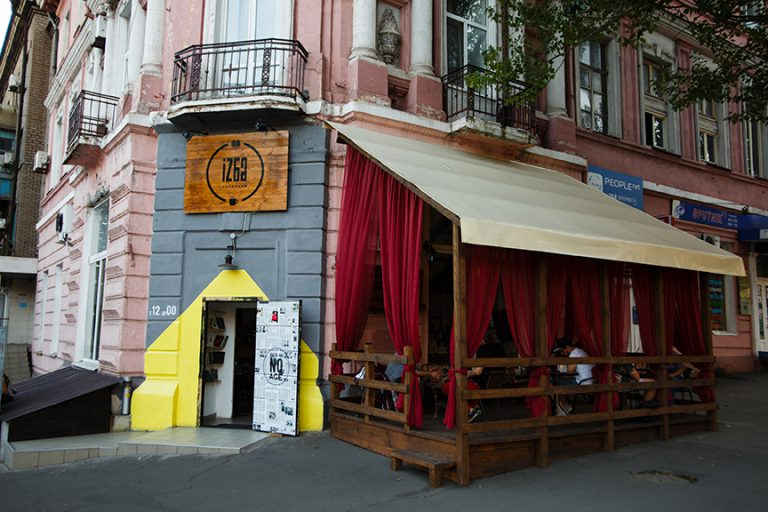
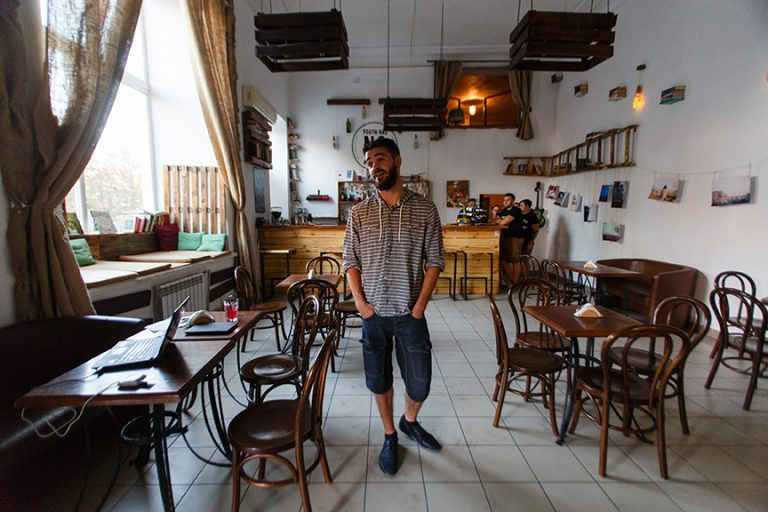
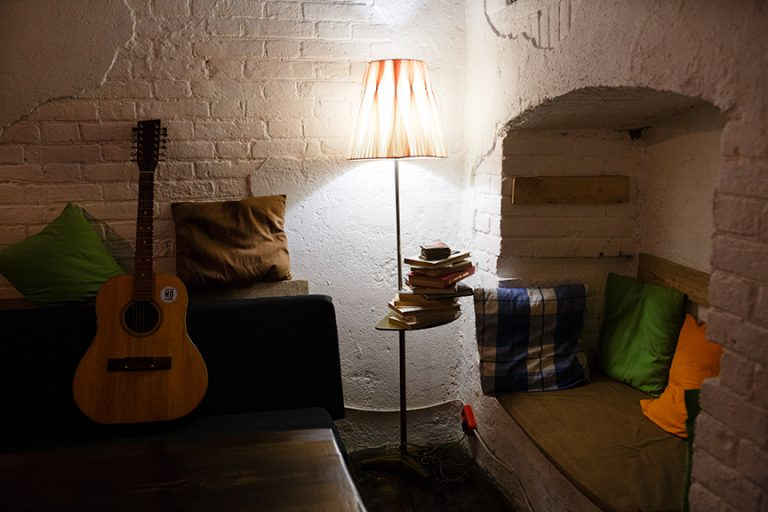
slideshow
These changes aren’t happening in the shadow. The city is changing to better, and people are changing too. Nowadays, people have a lot of ideas of how to spend their free time in Mariupol:
— There is a life in Mariupol: evenings of literature, concerts, festivals. The life is pulsing here, and people have places where to go. And many of them are facing the choice as there are enough events to choose.
How we filmed it
Watch about our visit to Mariupol, MTV, found rarities, and local ecology in our video blog.

